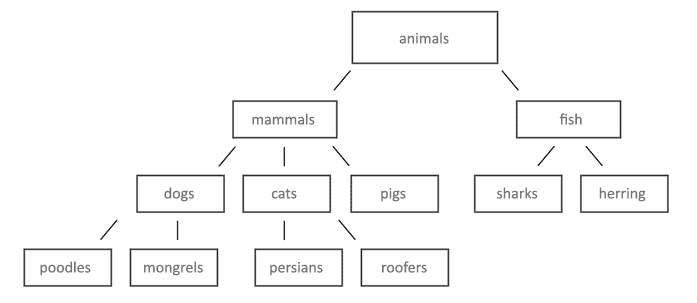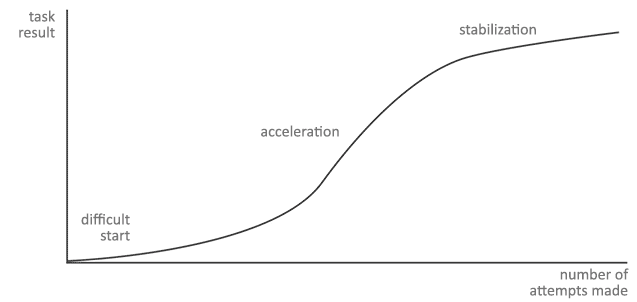Perception and the way of processing information by humans, part 2
Knowledge regarding the influence of culture on perception comes mainly from cross-cultural studies on visual perception. Visual illusions are a type of perception in which there is a discrepancy between how a given object looks and how it actually is. One of the most well-known visual illusions is the Müller-Lyer illusion (see figure 1.1). Based on conducted studies, it has been found that the participants most often indicated that the segment with the inward-facing arrowheads was longer compared to the segment with the outward-facing arrowheads.

Figure 1.1. Müller-Lyer illusion.
Researchers studying the influence of culture on visual perception have developed, among others, the theory of a world of right angles. This theory assumes that most people representing Western culture expect objects they come into contact with to have right angles.
In the human-computer interaction, formulating hypotheses and designing research experiments requires knowledge, among other things, of the mechanisms related to human memory. Information stored in memory can reveal itself in any context, for example, implicit memory can contribute to the efficient operation of a mobile application interface or even household appliances.
Memory characteristics
Memory is a mechanism of living organisms that allows for the accumulation of information representing the sum of experiences. This phenomenon enables interaction with the environment in which humans operate. From the perspective of cognitive psychology, memory has the following characteristics: information encoding, information storage, and information retrieval. In the field of human-computer interaction, research and theoretical considerations regarding memory are related to the learning process and mental models. Learning includes procedural aspects (acquiring practical skills) and declarative aspects (theory). The most commonly encountered division related to human memory refers to sensory memory, also known in the literature as ultra-short-term memory, short-term memory, and long-term memory.
Sensory memory is responsible for capturing information transmitted by receptors. For visual sensations, data is stored for about 0.5 seconds, while for auditory stimuli it is about 4 seconds. Information is then transmitted from sensory memory to short-term memory, which has a capacity of 30 to 40 seconds. Short-term memory also serves as an interface through which information is retrieved from long-term memory. The characteristics of long-term memory are: (1) high capacity, (2) relatively long time for storing information, and (3) memorization that requires concentration and, in some cases, repetition.
Endel Tulving introduced the division of long-term memory into episodic and semantic memory. Episodic memory is characterized by sensory experiences, events, episodes, personal beliefs, and memories of the past. On the other hand, semantic memory is a "special kind of long-term memory that is used for storing rules, ideas, and general concepts about the world, including other people; usually, semantic memory is based on generalizations or mental images of events, experiences, and learned knowledge."

Figure 1.2. Semantic network creating relations between concepts. Source: T. Maruszewski, Psychologia poznania , p. 191.
Factors influencing the effectiveness of task performance
Often, when using computer systems, users encounter specific obstacles in task implementation. This state may result from a lack of available functions, their imperfection, or a mismatch of the product to user requirements. However, it is worth noting that we are still in the realm of communication considerations. In addition to functionality, the mismatch of an IT product may concern information architecture. In this regard, we refer to communication competence, conditioned by the semantic-syntactic factor (a set of codes, conventions, and narrative schemes); the pragmatic factor (knowledge of social norms and behavior patterns); the efficiency factor (proficiency in using, for example, the interface of the GPW transaction system); and the engagement factor.
Preventing users from achieving their goals due to the factors described above can lead to two attitudes. One of them involves unequivocally giving up on using the system, while the other is characterized by a state in which the user attempts to solve the problem. In terms of research, we are dealing with a model process of mental operations based on a deductive or inductive schema. Due to the great diversity of the definition of what thinking is, for the purposes of this discussion, we will assume that we are interested in directed thinking. It occurs in problem situations where an individual is required to perform certain symbolic representations. According to researchers, the problem-solving process is cyclical in nature. It consists of detecting the problem, defining the problem and creating its representation, constructing a problem-solving strategy, organizing information, allocating available cognitive resources, constantly monitoring the progress, and making a final evaluation.
Stages of operations and intuition
User choices, for example in relation to using computer systems, can be made using algorithms or heuristics. Algorithms define the stages of operations that must be performed sequentially, without omitting any of the adopted actions. Heuristics often have an intuitive character and involve copying decision-making behaviors from the past, which can weaken goal achievement due to lack of methodicalness and consistency. On the other hand, it can lead to a faster problem solution, resulting in the user not giving up on using the chosen environment.
During the operation of a system based on an interface, understanding concepts and principles of operation plays a crucial role, as well as remembering data and relationships between them. The next stage is to achieve a level of automation, which means performing tasks based on empirically confirmed patterns. The learning curve (figure 1.3) shows the way in which competence increases with the number of tasks performed.

Figure 1.3. Increase in competence in relation to the number of tasks performed.
Source: T. Maruszewski, Psychologia poznania.
----------------------------------
If you have reached this point, reading both parts of the article, congratulations! Issues related to human perception are neither easy nor obvious, and the developed article is only a glimpse into this range. Anyway, I propose a bonus for you:
- if you are currently publishing something as part of your educational or scientific activities, you can use this article, but remember to include proper citations and credit the author by providing a link to the resources and the date of access.
If you are wondering why there is an article like this on the website of an interactive agency/software house, let me give you an answer. As an organization, we want to communicate that the results of our work are based on concrete knowledge, which we expand and implement into projects (from concept through research to the finished product). The visual layer of projects is just as important to us as technology. One without the other is like a kayak without a paddle (at least for the user).
Author: PhD Robert Antoszczak
See also the first part of the article:
Perception and the way of processing information by humans, part 1Commerce platform (B2B)
A commerce platform (B2B) addressed to the customers of MAKRO Cash & Carry in Poland (part of the Metro AG Group).
read more
PWA implemented in transport and logistics company
Grupa Transportowa Sp. z o.o. is a transport and logistics company that has chosen VISUAL for image-building on the internet.
read more